|
Down a narrow, winding road in Augusta County, Virginia, near Middlebrook, lies a very special place called Dutch Hollow Cemetery. There, on a hillside overlooking meadows and farms, is the final resting place of some of my earliest Hanger Ancestors. The landscape has changed little in the more than 200 years since the first graves were established. I learned of the cemetery and visited it for the first time in the summer of 2022 as part of my trip to the Valley for the Hanger reunion. My Hanger relatives all live in neighboring Rockingham County, Virginia and my husband’s Hanger relatives all live in Augusta County. (more on that interesting connection can be found in my Visiting with My Ancestors blog post!) My great-grandfather, Franklin Bismark Hanger was the first of the Hangers to leave Augusta County and settle in Rockingham County sometime in the 1900–1910. The Hanger reunion has always been just the folks descended from him in the past. This year we decided to open up the reunion to include all descendants of Frederick Hengerer, our immigrant ancestor, and my six-times great-grandfather. As part of this year's reunion, we took a field trip to the cemetery to share what we had discovered with our extended family. We could not have asked for a better day. The weather was beautiful with just enough of a breeze to keep us comfortable. For about a hundred years, the cemetery lay in ruin, forgotten and overrun by trees, brush and bramble. You can see from the photo below just how overgrown it was. It is only due to the herculean efforts of my cousin, Glenn Hanger, that we are able to visit there once again and learn of our ancestors’ final resting place. When Glenn learned of the cemetery that lay just across the road from his home, he took it upon himself to clear it out and bring it back to life. He spent many hours there, carefully removing what nature had taken back in those last 100 years. He has painstakingly dug out tombstones that were barely visible and put broken tombstones back together. The tombstone of my four-times great-grandmother, Catherine Wehrle Hanger, was beyond repair. Glenn had an exact replica of the stone made and put back in its original location in the cemetery. He has had a professor from James Madison University perform multiple surveys with ground penetrating radar and cadaver dogs, and have located 29 more gravesites that hopefully still have tombstones that can be uncovered in the years to come.
And he didn’t stop there! Glenn has researched the names on the tombstones he uncovered and all of the information he has for them can be found on his website: The Dutch Hollow Hanger Cemetery. Other researchers, including myself, have also contributed documents and research information and it continues to grow. It is an invaluable resource for anyone researching the Hanger family of the Shenandoah Valley! For those of us who have ancestors buried there, we owe Glenn Hanger a huge debt of gratitude for uncovering this beautiful cemetery and bringing it back to life. We can once again commune with those who came before us. If you have Hanger family in the Shenandoah Valley, definitely check out The Dutch Hollow Cemetery website. If you need more help with your Hanger family research, I’d be happy to help!
0 Comments
Last year during our trip to the Shenandoah Valley, my husband and I visited the Menno Simmons Historical Library at Eastern Mennonite University. There I discovered Peggy Joyner’s book, Frederich & Peter Hanger of Virginia: 1740 Immigrants Some Ancestors & Descendants. Frederich is my 6x great-grandfather. He and his father, Melchior, were the first of my ancestors to immigrate into the Shenandoah Valley from Württemburg, Germany.
You can read about last year’s trip in my blog, “Visiting With My Ancestors”. We owe a huge debt of gratitude to Peggy, who conducted extensive research into the Hengerer/Hanger families. She also had translated important early church records that were in German. Her work has made it possible for others to learn about their roots in the Hanger family. In her book about Frederich and Peter Hanger, she wrote about an artifact that Frederich and his wife, Eva, had donated to a Lutheran church in Woodstock, Virginia . This is what she wrote about it: Frederich Hanger's name is also a matter of history in Woodstock, the county seat of Shenandoah County. Jacob Miller of Woodstock donated lots 140 and 141 to Martin Fulse, Frederich Dellinger and Frederich Hanger for the Lutheran congregation to "Erect and Build a Church thereon and a school house if necessary" on 6 Nov. 1764. This church is Emmanuel's Church. An altar cloth embroidered in German was donated by Eva and Frederich. The translation, "Friederich Hengerer, Eva Maragreda Hengerin, Woodstock To God Alone the Glory 1767. Klaus Wust, author of The Virginia Germans, commented in 1975, "The Woodstock Lutheran Church has a table cloth that was a wedding gift to Friederich Hengerer and Eva Margreda Hengerin in 1767. It has been labeled altar cloth in recent years but is actually nothing but a typical wedding gift for a young couple and the embroideries are very much like the fraktur designs." ______________________________________________________________________________ After reading about it, I knew I would have to visit it! This summer during our annual trip to the Valley for the Hanger reunion, my husband, his parents and I all made the trip to Woodstock to check it out. My husband’s mother is also a Hanger (for more information on that, you should really check out my “Visiting With My Ancestors” blog). Even if it was originally "nothing but a typical wedding gift," the church definitely used it as an alter cloth since then. The alter cloth is framed and hangs in a social hall at the church. There, in the presence of this fragile cloth, I felt a momentary connection to my 6x great-grandparents, Frederick and Eva. It made the past come to life for me as I imagined them in their church gathered around that very cloth. This is why it is so important to preserve not only the stories and histories of our ancestors, but also the artifacts we find as well! Unfortunately, the cloth is not aging very well and is in need of some attention in order to preserve it for future generations. With the help of my cousin, Glenn Hanger, plans are underway to do just that! It is so important to preserve those rare artifacts that connect us to our past and provide a touchstone to those who came before! What stories and/or artifacts do you want to know more about in your family’s history? If you have ever wondered about your family history, or heard stories about certain family heirlooms, and would like to find out more, you can always contact me to start a conversation about how I can help you. The Shenandoah Valley, nestled between the Blue Ridge Mountains to the east and the Allegheny Mountains to the west, is a region steeped in history and rich in genealogical treasures. This picturesque valley in the heart of Virginia has witnessed centuries of human migration, settlement, and cultural fusion.
Its history as a melting pot of cultures began with its earliest inhabitants. Long before European contact, various Native American tribes, including the Shawnee, Cherokee, and Iroquois, called this fertile region home. They cultivated crops, and established vibrant communities, leaving a profound cultural imprint on the valley's landscape.The Great Warrior's Road, a historic pathway through the Shenandoah Valley, served as a vital link in the development of the Great Wagon Road. Originally established by Native American tribes for trade and communication, this ancient trail evolved into a significant transportation route. In the 18th century, European immigrants from various countries used this critical thoroughfare to venture into the uncharted territories of the American South. The majority of these early immigrants came from the following regions:
My ancestors were among some of those early immigrants into the valley. My German ancestors, the Hengerers (now Hanger) arrived in the 1750s and eventually settled in Augusta County around 1769. The Scots-Irish side of my family, the McCalls, arrived sometime in the mid to late 1700s and settled in Rockingham County. Indeed, my roots run deep in the Shenandoah Valley, the beautiful backdrop to my childhood and the heart of my family's history. Growing up there gave me a profound appreciation for its ancient mountains and the warmth of its people. The people here are rooted in tradition, kindness, and a strong sense of community. If you share a connection to the Shenandoah Valley, whether through your ancestors or your own life experiences, I invite you to embark on a journey of discovery. Its history is not just a story of the past but of a living tapestry of families, traditions, and legacies waiting to be uncovered. Contact me to get started! My husband and I are both from the Shenandoah Valley in Virginia, he from Augusta County and I from the neighboring county of Rockingham. Our roots are deep there with our Ancestors arriving in the Valley in the 1700s. Like a lot of people from the Valley, he and I actually share a common ancestor as well (don't worry, it's pretty far back!). Both of our mothers' maiden name is Hanger. John Jacob Hanger(1790–1870) and Catharine Wehrle(1791–1826) are my 4x great-grandparents and my husband’s 3x great-grandparents, which makes us 4th cousins once removed (see, it's totally fine!). We no longer live in the Shenandoah Valley, but visit as often as we are able. Last summer we returned for the Hanger Family Reunion, which had not been held since Covid. The numbers have dwindled over the years with only 13 in attendance last year. I decided that while we were in town, I would try to “visit” as many of my Hanger ancestors as I could find! With some digging, planning and preparation, our trip was a success and left us both with an even stronger sense of connection to our ancestors and the Valley from which we came. It was a very special trip! The way I “visited” with my ancestors on this trip was to visit gravesites, places they had once lived, and also some archives for a couple of very old documents! I also made facebook posts in my family’s page so my siblings and nieces and nephews could learn a little about their ancestors as well. First my sister and I took my mother to the Hanger Family Reunion. Here we visited with our living relatives listening to the stories of their parents and looking through their old photographs. This is so important! Often we think of famly history as being something from long ago and forget that our parents, grandparents, aunts and uncles are a great touch stone to that past and have lots of information that they love sharing and passing down. So make sure to get those stories while you still can! After the reunion, we visited my mother’s parents(my grandparents), Howard Hamilton Hanger(1918-1986) and Hazel Frances Sandy(1920-1984). Howard served in WWII and then worked on farms in Rockingham County the rest of his life. Hazel played the guitar and wrote country songs. Together they raised 6 children, Kenny, Opal, Laura(my mother), Larry, Phyllis and Dale. Dale died in a drowning accident at the age of 14. Opal and Larry are also no longer with us. Next stop was the Dayton Cemetery where my great-grandparents are buried, Frank Bismark Hanger(1890-1950) and Laura Virginia Fadely(1891-1975). My mother was named after Laura Virginia. She knew her well and remembers her giving them each a coloring book and crayons for Christmas. She was too young to remember Frank who died when she was only 6 years old. Frank was the first of the Hangers in my family to move into Rockingham County, Virginia. The Hangers originally settled in Augusta County, Virginia in the mid 1700s. We also managed to locate the area where Frank’s farm would have been when he was living there in the 1920s. It is beautiful countryside! My mother tells us this area used to be called Lick Skillet because during the Civil War there was an encampment of soldiers there who would "lick the skillet clean" because they didn't have enough food to go around. My great-great grandparents are buried in Weyers Cave, Augusta County, Virginia. Ewell Walker Hanger (1866-1937) and Mary Ann Mohler (1864-1945). They lived on a farm in that area. At the age of 71, Ewell was baling hay and fell off the wagon and died of his wounds a few days later. He was baling hay at 71! Ewell and Mary had 5 children. Interestingly, I also lived on a farm in Weyers Cave for a brief period of time in my childhood. I never knew my great-great grandparents were just down the road from me! A little further up the Valley in Middlebrook, Virginia, there is a Hanger family cemetery called Dutch Hollow Cemetery. (Look for a blog post soon all about Dutch Hollow Cemetery and the man who pretty much single-handedly brought it back to life!) My 3- and 4x great-grandparents are buried there. David Ott Hanger (1820-abt 1868) and Elizabeth Cale (1826-1906) are my 3x great-grandparents. Together they raised 9 children. He died not long after their last son, Ewell (my great-great grandfather), was born, leaving Elizabeth to raise most of the children on her own. David’s headstone has not been found in the cemetery but Elizabeth’s has and it is likely that he would have been buried there. John Jacob Hanger(1790-1870) and Catharine Wehrle(1791–1826), David's parents, are also buried at Dutch Hollow. John owned the land right next to the cemetery and his house was still standing until around 1970! They raised 9 children together. (John is mine and my husband's common ancestor.) John's parents (my 5x great-grandparents), John Jacob Hanger Sr(1764-1833) and Catharine Dull(1770-1830) are likely buried in Dutch Hollow Cemetery as well. Their graves have yet to be found. They lived in Middlebrook and had 10 children. My 6x great-grandfather Johann Frederick Hengerer(1726-1799) married Eva Margaretha Mayer(1736-1818). He was the first of my Hanger ancestors to settle in Augusta County, Virginia. In 1740, at the age of 14, his parents, my 7x great-grandparents, Melchior Hengerer and Maria Majer, immigrated from Württemburg, in what is today Germany, and arrived in Philadelphia, Pennsylvania on the Robert and Alice.
I discovered that the University of Virginia’s small collections library has in its holdings a piece of paper on which Frederick recorded all the names and baptismal dates for his 13 children. My husband and I visited the library and were able to "visit" with our ancestors! It was amazing to touch (very carefully) a piece of paper from 1755 that had been touched by my 6x great-grandparents. It was a moment! Not only did that document provide us with important genealogical information, but it was also a touchstone to the past. In that moment, I felt very connected to them. With a lot of research and planning, I managed to "visit" with all of my Hanger ancestors going all the way back to the first Hanger who entered the Valley in the 1760s. It was a trip I will never forget and I am so happy I was able to share it with my husband and my mother! I have always loved Rockingham and Augusta counties, but I now feel a very deep rooted sense of belonging by connecting with my Ancestors on that trip. As a kid we moved around a lot, mostly in Rockingham County, Virginia. My dad would tell us it was because of the Gypsy in our blood. He said that we were related to the Gypsy Queen who was buried with her horse in the Ottobine cemetery. I remember imagining this woman who was a Queen in all her fine clothing and jewels and thinking how amazing it was that I was related to her. As far as I knew there weren’t any other royal families from the Shenandoah Valley, and certainly none of the other kids at my school were from royal families. It made me feel special. When I began researching my family’s history, I decided to find out if the family lore about the Gypsy Queen was true. I asked my dad if he remembered any more details about her and he said he thought we were related to her through the McCall side of the family. Martha Jane McCall was his maternal grandmother, my great grandmother. My siblings remember mostly the same story, just that we were related to a Gypsy Queen or princess who was buried with her horse. My mother remembered being told it was one of the Landes brothers (my father’s maternal uncles) who married the Gypsy Queen. Unravelling the Story A newspaper article revealed there was indeed a Gypsy Queen who was buried in the Ottobine United Church of the Brethren Cemetery (now the United Methodist Church) in Rockingham County, Virginia. Her name was Dilly Stanley and she led a band of 60 members. They had been camped in Clover Hill for six weeks due to Dilly being ill from gall stones. Dilly immigrated from Ireland at the age of 12 with her parents Michael and Eliza Stanley. She was married to three men, William Broadway, a man by the last name of Cooper and a man who went by the name, Gypsy Kelley. Gypsy Kelley was with her when she died. There is no evidence she was ever married to a McCall or Landes. She died the morning of 26 May 1910. After her death, all of her belongings were burned including her tent and wagon. Her pet horse was said to be chloroformed, though it is not clear whether or not it was buried with her. Dilly's Tombstone on the Find a Grave Memorial site. The United Methodist Church in Ottobine, VA. submitted by Raderfarm submitted by Jetta Earhart The McCalls
Martha Jane McCall (my great grandmother) had three brothers, William Perry McCall Jr, George Christian McCall and Abraham Lincoln McCall. Abraham died when he was 21 never married. William married a woman named Martha Robinson. George married Stella Harrison who was said to have been a Gypsy. But he was never married to Dilly Stanley. There is a tree on Ancestry that claims Stella Harrison was a Gypsy princess, but there is no supporting evidence listed, which would be hard to come by in the first place. The Landes’ Dilly Stanley would have been in her late 60s by the time any Landes brothers would have been of marrying age making it highly unlikely. Just to be thorough, a quick look into the marriage records for the Landes’ revealed that none of them had ever married Dilly Kelly or any of her daughters. Conclusion There was a Gypsy Queen who was buried in Ottobine. However, it is unclear if her horse was buried with her. Unfortunately, I am not related to her. It is possible that Stella Harrison, a known Gypsy woman who married George McCall, my great uncle, was a Gypsy Princess. The search continues for more information on Stella. If you’re curious about the stories you’ve been told about your family history and would like to learn more, take a look at the Family Lore research package and contact me. One of my favorite days is voting day! I am very thankful for the women who fought for the right for me and other women to be able to vote and have our voices heard on all the important matters at stake.
It got me thinking this morning about my female ancestors and who was around during the presidential election of 1920, the first election women would have been eligible to vote. I’m also very curious as to how many of them registered and voted! With a quick look at my tree, I can see that I had quite a few female ancestors who would have been eligible to vote that year. On my father’s side, my grandmother, Pamma Landes, both great grandmothers, Mattie Dillard and Martha Jane McCall, and even one great great grandmother, Susannah Lambert, were all still living and eligible to vote for the first time in their lives. On my mother’s side, my grandmother was born in 1920 so she would not have been voting just yet. However, both of my great grandmothers, Laura Virginia Fadely and Estella May Rader and three of my great great grandmothers (wow!), Mary Ann Mohler, Barbara Virginia Kagey and Eliza Homan Showalter were all still alive and eligible to vote! How exciting! Ancestry has a category in the catalogue for Voter registration, however, they did not have any collections for Virginia. Family Search did not have a voter registration collection for the two counties I needed, Rockingham and Augusta. If I don’t find what I’m looking for at Ancestry and Family Search, I always turn to Google next! If you aren’t utilizing Google searches in your research, you are missing out on a very powerful research tool! All of my grandmothers lived in Rockingham County, Virginia except for one and she lived just down the road in Augusta County, Virginia. I googled “voter registration in Rockingham County, Virginia”. The first return was “Rockingham County Voter and Election Records” held by James Madison University. This is exciting! I love finding a “new to me” record collection! It looks like there is a lot of great information in this record collection including, Name, Date of Birth, Age, Occupation, Residence, Naturalization Status and Precint Transfer. Unfortunately, these records are not online and I no longer live in the area, but I do visit often! I’ve already added it to my research plan for my next trip to the Shenandoah Valley. For my grandmother who lived in Augusta County, Virginia, it looks like I’ll be taking a trip to the courthouse to see if they hold old voter registrations there next time I’m in town. Check back in the future for an update on whether or not they voted in the 1920 election! In the meantime if you are interested in finding out if your grandmothers voted in the 1920 election check out the record collections on Ancestry and Family Search and if you can’t find anything, contact me! And don’t forget to vote today! Today as we remember and honor those who have proudly served their country in the armed services, I’d like to tell you a little about my maternal grandfather, Howard Hamilton Hanger, who served during World War II.
Howard was inducted into the Army on 26 December 1944 in Roanoke, Virginia, and honorably discharged on 19 January 1946 at Fort Meade in Maryland. He served in Company G 19th Infantry as a rifleman. During his service, he received the following decorations and citations:
This is the official description of his military occupation, “Rifleman: Loaded, aimed, and fired the M-1 rifle to destroy enemy personnel.” The reason I know so many details about his military service in WWII is because I happen to have his original discharge papers. My grandfather kept them and when he died in 1986, my mother got them. When I became interested in my family’s history, she shared them with me. In her collection is a piece of a ribbon, which after doing a little research, I was able to identify as the ribbon that would have been attached to his Good Conduct Medal. Unfortunately, we don’t know what happened to the medal. She also had in her possession, a little lapel pin that says Overseas on it. I discovered that this pin is what was known as sweetheart jewelry, which was popular during WWII. Soldiers would give these pins to their loved ones at home as they headed off to war. When my grandfather left to serve his country, he left behind his wife and three young children. I can only imagine how difficult this must have been for him and his family. I imagine my grandmother proudly wearing this little lapel pin in honor of him while he was away and anxiously awaiting his safe return. I am thankful for his honorable service to this country and thankful that he returned safely to his family at the end of the war. If you have ancestors who served in the armed forces, ask your family members if they have their service records. They will provide you with a wealth of information about their time in the armed forces. They can also provide important genealogical information such as date and place of birth, and where they were living at the time. Some records may give you the names of spouses or parents as well. If they don’t have their service records, there are other ways to get them. Here are a couple of sites you can search for military records: Contact me, if you would like help finding your Ancestor's military records! While researching my family history, I made a scandalous discovery! Two pension claims had been filed for my paternal great-grandfather, William Byrd, by two different women, Mattie and Hattie, in two different states, Virginia and Illinois. I knew Mattie was my great-grandmother, but who was Hattie and why was she filing for William’s pension?
With this tantalizing bit of this information, I headed to the National Archives in Washington, D.C. Because two women had filed for his pension, an investigation had taken place. The resulting file contained actual interviews taken of my great-grandmother, Mattie, her brothers, William’s half brother, and a couple of their neighbors. It was a treasure trove of genealogical information! This is the story that unfolded within those records. In Mattie’s interview she stated that in 1898, about a year after she and William had been married, she was recovering from an illness and went to her mother’s house to recuperate. She said, “He (William) took me to the train and assisted me in getting on the train and kissed me goodbye and said be a “good girl”, and I told him I would.” This was the last time Mattie ever saw him. Shortly after her arrival, she was notified by the railroad agent that he had shipped all of her stuff to her and she would have to pay the charges before picking them up. William’s half-brother told the investigator that he went to West Virginia for a lumber job where he put together a stake and then went on to Illinois. There he enlisted in the Army to fight in the Spanish American War. Afterward, he returned to Illinois where he married another woman, Hattie, and he lived with her until he died in 1909. He was unaware if William had secured a divorce from Mattie or not. Mattie claimed that William never asked for a divorce, they never got one, and she never knew that he had married this woman, Hattie, in Illinois. She learned of his death around 1921 and filed for his pension. This triggered the investigation and interviews into the matter, which took about three years to resolve. The investigation proved that William and Mattie had been married but never divorced. In 1924, Mattie was finally granted William’s pension, $30 per month. As I began to read the last documents in the file, I suddenly realized I was holding a handwritten letter from my great-grandmother. The original letter. Mattie had held that piece of paper, that was her handwriting on it and now I was holding it! I was flooded with emotion and tears streamed down my face. The gentleman sitting next to me leaned over and said to me, “Oh honey, you hit the motherload didn’t you?!?” Yes, I certainly did! She wrote several letters to the pension bureau from 1932–1934 asking them to increase her pension amount. In them, she discussed in detail how she was unable to get more work because she was ill (I later discovered she had tuberculosis (TB)) and she had to care for her disabled sister. The last letter she sent them simply stated, “Flour has gone up. I am not about to eat Bakers Bread. Yours Respectfully, Mrs. Mattie Byrd” That is my favorite letter in the file. No matter what indignities she may have had to face in life, no matter how desperate, the one thing she would not do was buy commercially made bread from a store! The letter did the trick and in May of 1934, they granted Mattie an increase in the pension amount. Unfortunately, Mattie lost her battle with TB a year later. After discovering this incredible story about my great-grandparents at the National Archives, I was hooked! I needed to know more about the people who came before me and the lives they led. If you are interested in discovering more about your ancestors, contact me! We can set up a free consultation at your convenience. |
AuthorMarie has spent 15 years researching her own family origin stories. Archives
October 2023
Categories |



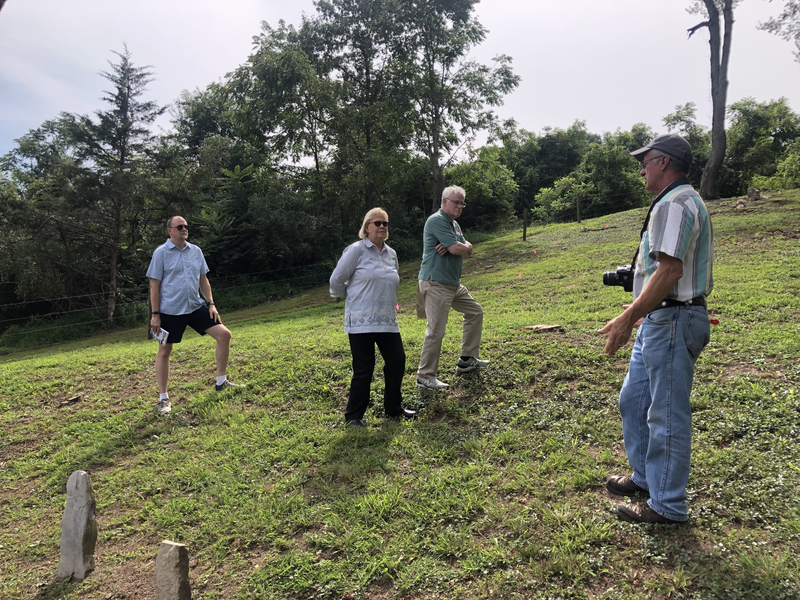




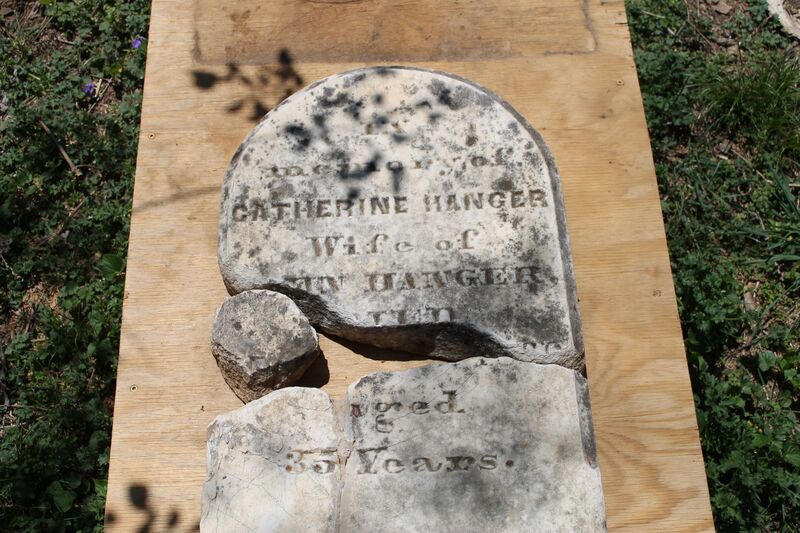




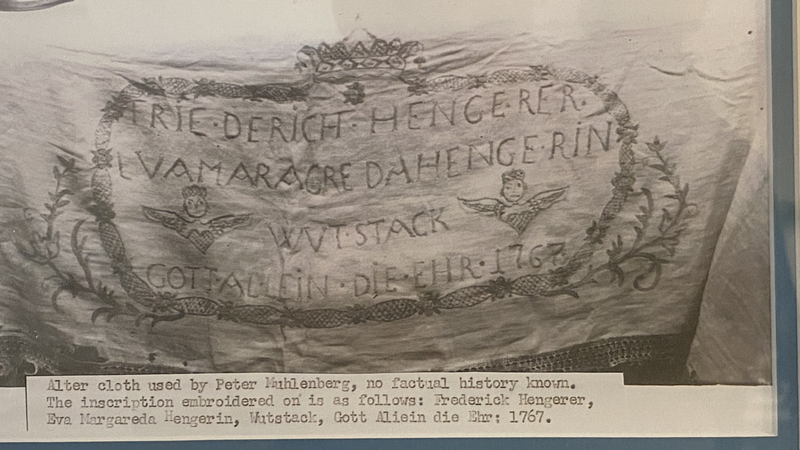






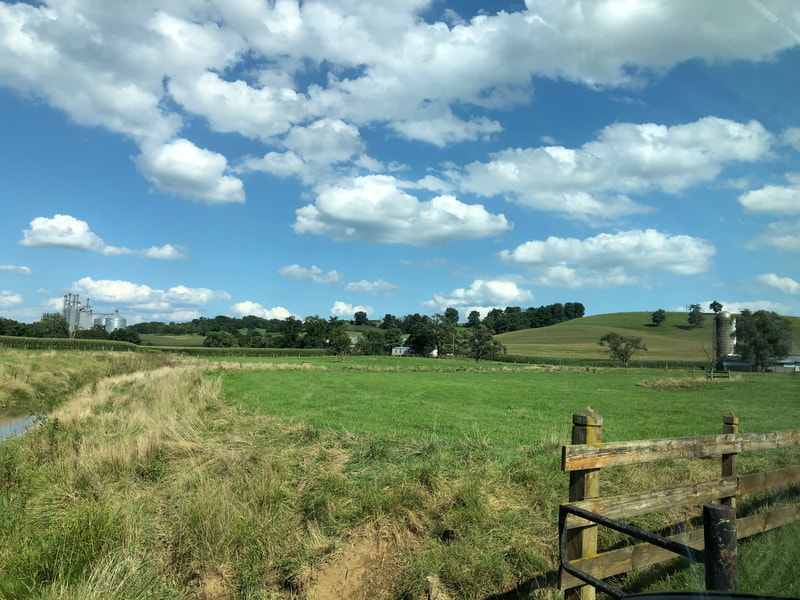


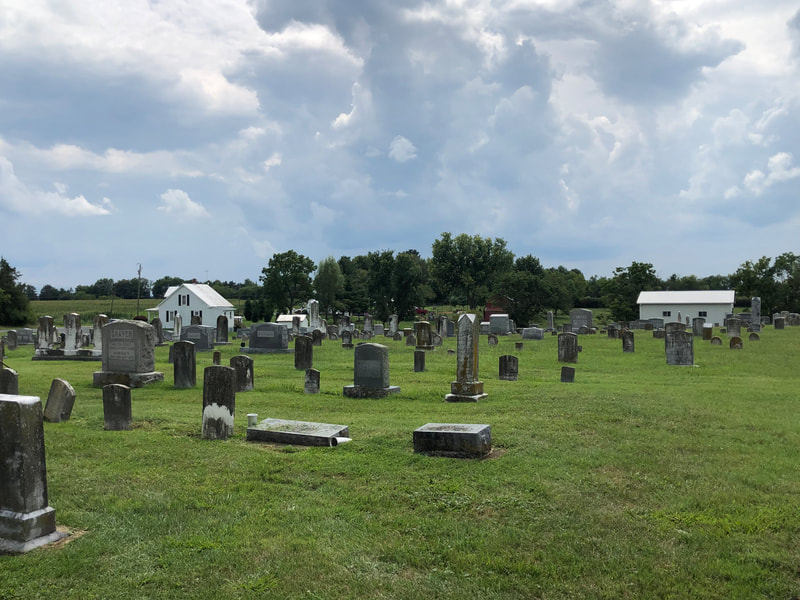












 RSS Feed
RSS Feed